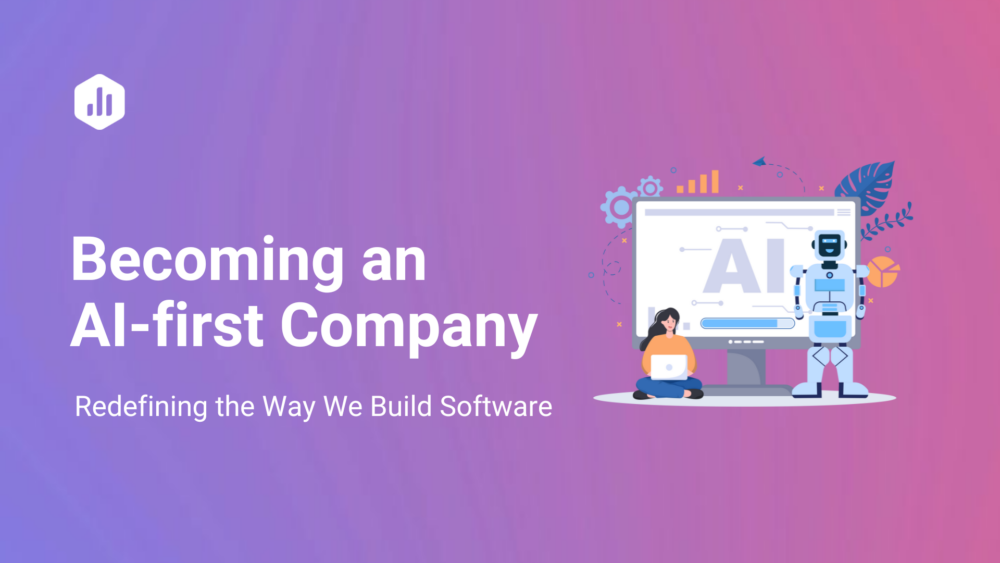Table of contents
Numbers aren’t for everyone.
And that’s okay, because let’s face it: we all have our strengths.
Working with data – whether that means collecting, cleaning or interpreting it – is one of those areas of business that can really stump people. And when things don’t quite add up, it’s common for some to get frustrated and in turn, quit trying to understand what the data they’ve got actually means.
The struggle can be real.
But it doesn’t have to be.
There are ways to make sense of the data that your organization collects both internally and externally, which is key because some of the most important business decisions you make will probably depend on your understanding of the information gathered.
So how can you help your team (or company!) wrap their brains around working with data?
In this case, it’s all about putting yourself in others’ shoes and showing a willingness to instill data-centric best practices throughout your business.
Here are 3 easy-to-implement strategies that will make your data relevant, straightforward and second nature.
Make The Connection
With so much potential for distraction, being clear on your priorities has become an absolute must in the digital age. Focusing on the items and areas that you understand best is typically the most comfortable starting point for many of us.
Data is no different – if someone can’t see how it fits into the bigger picture or why it’s important, they’re not going to spend much time with it, are they?
This is where finding ways to make data relevant becomes vital.
Your people need to connect the dots between their role and data in order to really internalize why data is so important to leverage. For instance, if you show how using data can make someone’s job easier and increase the quality of their results, they will be more inclined to proactively turn to data to solve problems in the future.
Qantas does a terrific job of providing their front line (think flight attendants) with data (like travel history, food & beverage preferences, birthdays, etc.) in an effort to help them create a personalized experience for customers in the sky.
This creates a direct connection between the employee’s performance and the data. It’s empowering and motivating all at once, and shows the employee how data can make a big difference in both customer satisfaction and company success.
So make sure your team knows that they shouldn’t be exploring data just for data’s sake (although there are a few who might enjoy that!), but rather to solve problems and answer questions your organization is facing.
Translate
It’s natural for people to shut down and tune out when they feel overwhelmed, unintelligent or incapable of grasping certain concepts.
When this sort of thing happens in your organization, how do you react?
Do you throw your hands up and comfort yourself with the fact that some people “just don’t get it?” Or are you more inclined to explore the disconnect and try to help them figure it out?
The truth is that not everybody can look at a spreadsheet and make sense of things the way you can.
And it’s on your shoulders to be as straightforward as possible while creating a culture where questions are encouraged, not seen as shortcomings.
If somebody doesn’t understand something – translate for them!
As an example, consider that 65% of people are visual learners – so why not use infographics and/or different forms of visualization to make data more digestible? By catering to different aptitudes and learning styles, you improve your chances of total comprehension.
Whenever possible, play to people’s strengths; use terms they can most easily understand and try to ensure you’re speaking the same language.
Practice Makes Perfect
The ability to ride a bike doesn’t just magically overnight.
It takes skill, balance, effort, patience… and above all else, it takes practice!
Same when it comes to working with data.
While you don’t necessarily want to get bogged down in numbers, it’s critical that you incorporate data-centric processes into the underlying structure of your business.
It’s not enough for your people to be working with numbers and data only when required (month-end, payroll, etc.) You’ve got to find other meaningful ways to expose them to data, raise their comfort level and set them up for success.
For instance, tying employee bonuses directly to metrics is a great way to keep people accountable and focused on data. If Employee A knows that their compensation is dependent on bringing X new leads in that quarter, they’re going to be darn sure to watch those numbers!
Or maybe you can hold meetings focused on reviewing key figures that impact your team, or host lunch and learns that provide learning opportunities.
Building proper habits takes time, so the sooner you provide your team with the tools and resources they need to appreciate and implement data, the better!
Can you think of other ways to demystify the data your organization works with? What does simplifying data help your team accomplish? Let us know at @databoxHQ or @mattblackink!






![How to Improve Agency Operational Efficiency [Insights from 40+ Agencies]](https://cdnwebsite.databox.com/wp-content/uploads/2023/09/14052320/agency-client-collaboration-1000x563.png)




